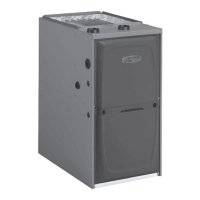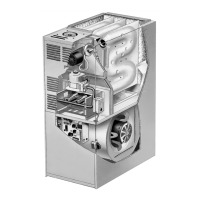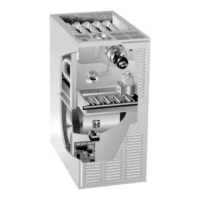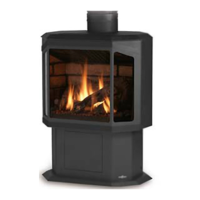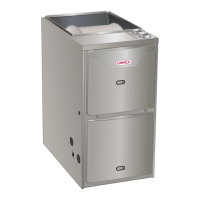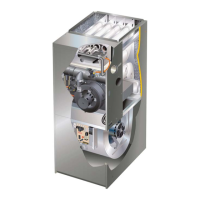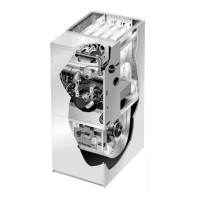507270-03 Page 49 of 60Issue 1917
Testing for Proper Venting and Sufcient Combustion Air for Non-Direct Vent Applications
CARBON MONOXIDE POISONING HAZARD
Failure to follow the steps outlined below for each
appliance connected to the venting system being
placed into operation could result in carbon monoxide
poisoning or death.
The following steps shall be followed for each appliance
connected to the venting system being placed into
operation, while all other appliances connected to the
venting system are not in operation.
WARNING
After the gas furnace has been started, the following
test should be conducted to ensure proper venting and
sufcient combustion air has been provided to the unit as
well as to other gas–red appliances which are separately
vented.
If this furnace replaces a Category I furnace which was
commonly vented with another gas appliance, the size
of the existing vent pipe for that gas appliance must be
checked. Without the heat of the original furnace ue
products, the existing vent pipe is probably oversized for
the single water heater or other appliance. The vent should
be checked for proper draw with the remaining appliance.
The test should be conducted while all appliances (both
in operation and those not in operation) are connected to
the venting system being tested. If the venting system has
been installed improperly, or if provisions have not been
made for sufcient amounts of combustion air, corrections
must be made as outlined in the previous section.
1. Seal any unused openings in the venting system.
2. Visually inspect the venting system for proper size
and horizontal pitch. Determine there is no blockage
or restriction, leakage, corrosion, or other deciencies
which could cause an unsafe condition.
3. To the extent that it is practical, close all building doors
and windows and all doors between the space in
which the appliances connected to the venting system
are located and other spaces of the building.
4. Close replace dampers.
5. Turn on clothes dryers and any appliances not
connected to the venting system. Turn on any exhaust
fans, such as range hoods and bathroom exhausts, so
they will operate at maximum speed. Do not operate a
summer exhaust fan.
6. Follow the lighting instruction to place the appliance
being inspected into operation. Adjust thermostat so
appliance will operate continuously.
7. Use the ame of match or candle to test for spillage
of ue gases at the draft hood relief opening after 5
minutes of main burner operation.
8. If improper venting is observed during any of the
above tests, the venting system must be corrected or
sufcient combustion/makeup air must be provided.
The venting system should be re–sized to approach the
minimum size as determined by using the appropriate
tables in appendix G in the current standards of the
National Fuel Gas Code ANSI-Z223.1/NPFA 54 in the
U.S.A., and the appropriate Natural Gas and Propane
appliances venting sizing tables in the current standard
of the CSA-B149 Natural Gas and Propane Installation
Codes in Canada.
9. After determining that each appliance remaining
connected to the common venting system properly
vents when tested as indicated in step 3, return doors,
windows, exhaust fans, replace dampers and any
other gas burning appliance to their previous condition
of use.
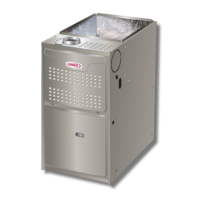
